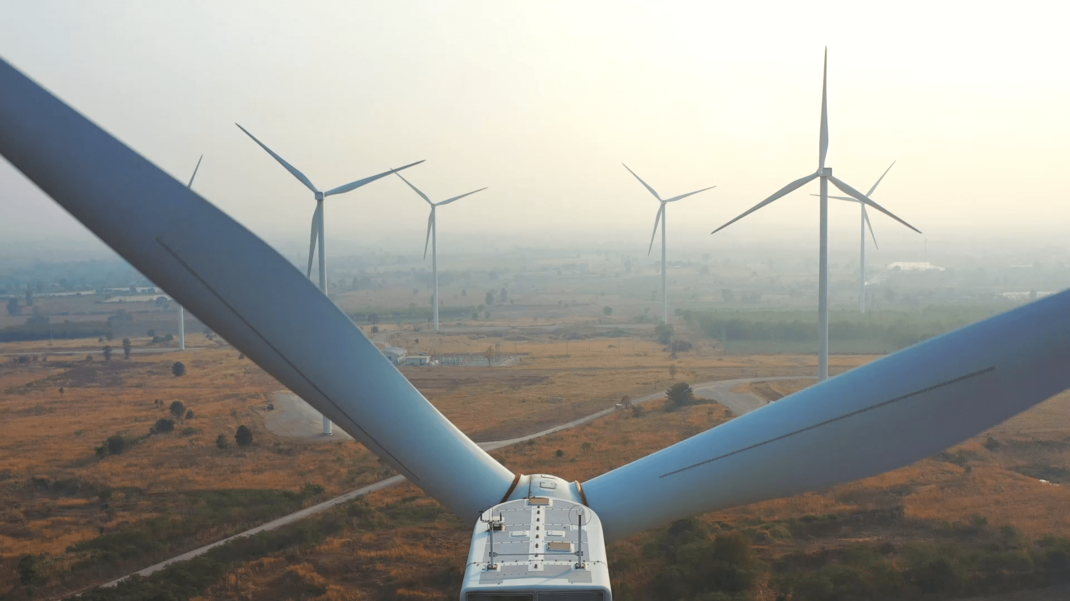The role of CfD and CPPAs in the UK PPA market
Explore the evolving landscape of renewable power purchase agreements (PPA) as Portfolio Team Manager, Matt Neve, sheds light on the transforming energy market and the role of CfDs and CPPAs in achieving Clean Power 2030 targets.

As the UK accelerates towards net zero, the UK energy market is undergoing a major transformation, presenting both challenges and opportunities for generators navigating the evolving landscape of Power Purchase Agreements (PPAs). Following an engaging panel discussion at the All-Energy Conference, Matt unpacks the importance of Contracts for Difference (CfDs) and Corporate Power Purchase Agreements (CPPAs) and how these mechanisms are critical to delivering the capacity needed to meet the Clean Power 2030 target.
The ongoing evolution of the UK PPA market
Looking back to 2020
The year 2020 marked an unprecedented shift. COVID hit the world, disrupting global economies and changing thousands of people’s lives in an instant. UK energy demand hit an all-time low, consumption dropping by nearly 10%, and, while renewable energy was on the rise, fossil fuels, including coal, still made up over 40% of electricity generation.
This was followed by the outbreak of war between Russia and Ukraine which sent wholesale power prices soaring, with PPA price levels peaking at over £500/MWh in 2022. During this volatile period, many generators were able to take advantage of the volatility and maximise their assets potential, but ultimately, it was unsustainable. Inflated risks caused a large number of suppliers to exit the market, and renewable growth was stalled as generators were hesitant to commit to long-term contracts amid cost and risk uncertainty.
At the time, UK renewable capacity stood at approximately 48GW.
A changing market in 2025
Jumping forward to today, and the energy market has settled to a new normal and renewables are now the dominant source of UK electricity generation.
In 2024, renewable generation rose by 6.5% to a record 144.7TWh, accounting for 50.8% of total UK generation, the first time renewables have exceeded 50%. This upward trend is set to continue, with projections for 2025 estimating renewables will generate 58% of the UK’s electricity.
The cost of wind and solar has dropped significantly due to advances in technology, economies of scale, supply chain efficiencies, increasing competitiveness and accelerating deployment. The PPA market will be fundamental in supporting this growth, and as the market settles, developers are looking for more stability and revenue certainty with long-term contracts.
Today, the UK has reached approximately 60GW of installed renewable capacity, but to reach national targets, much more is required.
The next challenge: Clean Power 2030
We are now at a critical juncture, only five years away from NESO’s 2030 clean power target of at least 95% of Great Britain's electricity generation coming from clean, renewable sources.
To get there, we need stable investment, predictable pricing, and large-scale deployment of renewables. NESO estimates we’ll need:
- 43–50GW of offshore wind
- 27–29GW of onshore wind
- 45–47GW of solar power
Combined with flexible generation and battery storage, this means doubling the current capacity to at least 120GW. Achieving this scale demands not just infrastructure, but investment, all of which must be underpinned by tools that reduce risk, secure pricing, and support long-term planning.
The role of CfDs and CPPAs
This is where CfDs and CPPAs come into play as the two main options to support financing for new renewable projects:
 Option 1: Contracts for Difference (CfDs)
Option 1: Contracts for Difference (CfDs)
The CfD scheme is the government’s primary mechanism for supporting low carbon electricity generation. It provides developers with a guaranteed strike price, shielding them from market volatility and enabling long-term financial certainty.
CfDs are awarded through competitive auctions run by the Low Carbon Contracts Company (LCCC). To date, six auction rounds have taken place over the past 10 years, with the first awarding almost 2GW of capacity in round 1, to the latest Allocation Round 6 (AR6) in 2024 awarding nearly 10GW of capacity, totalling almost 30GW capacity overall.
CfDs set a fixed "strike price" for electricity generated by a renewable energy project. If the market price falls below this strike price, the generator receives a top-up payment to cover the difference. Conversely, if the market price exceeds the strike price, the generator pays back the difference.
By guaranteeing a fixed price for electricity, and with the creditworthiness of the government backing, CfD PPAs provide revenue certainty and bankability, encouraging investment and making it easier for renewable energy projects to secure financing.
 Option 2: Corporate Power Purchase Agreements
Option 2: Corporate Power Purchase Agreements
While CfDs remain the primary mechanism for new generation, they may not be suitable for every project or developer. This may be due to pricing, auction timing, or portfolio diversification.
As such developers may want to consider a Corporate Power Purchase Agreement (CPPA). A physical CPPA involves an agreement between a consumer and a generator where an offtaker sleeves the generator’s volumes into the consumers energy contract.
CPPAs are becoming increasingly popular as businesses commit to ESG goals, however they can be very complex to negotiate. This is where a virtual CPPA (vCPPA) can come into play.
A vCPPA is a financial hedge, rather than a physical power delivery contract. It functions much like a CfD, where both parties agree to a strike price and a market reference price for the duration of the contract. The generator and buyer then settle the difference, providing revenue certainty for the generator and price predictability for the buyer.
The road ahead: policy, partnerships & innovation
At SmartestEnergy, we’ve been proudly supporting independent generators, from landowners to large-scale developers, for almost 25 years. Whether through CfDs or CPPAs, we work in partnership with our customers to find the PPA structure that best suits their needs.
In just five years, the UK has transformed its energy landscape, and the next five will be even more critical. Innovation is needed, and with challenges including grid connection delays, policy uncertainty around REMA, zonal pricing, and the future of CfD Allocation Round 7, the path to Clean Power 2030 is anything but straightforward. It’s clear that the industry is sceptical, highlighted by a live poll at All-Energy, where 86% of the panel audience said they believe achieving Clean Power 2030 seems ‘very unlikely’.
Overcoming these obstacles to achieve targets will require close collaboration across the sector including policymakers, developers, offtakers, consumers, grid operators and more across the entire energy value chain.
In summary…
The UK has made remarkable progress, but the pace must now accelerate. Meeting Clean Power 2030 will require:
- Scale – rapidly increasing renewable generation capacity
- Subsidisation – targeted support where the market alone won’t deliver
- Collaboration – working together across the sector to remove barriers and unlock opportunity
At SmartestEnergy, we remain committed to empowering a greener generation. But, to achieve what’s needed over the next five years, we’ll need to work together in partnership.

Secure your route to market with a PPA
With long-term stability and financial backing from the Marubeni Corporation, and a wealth of experience in providing profitable and effective solutions to a wide range of renewable energy generators across all technology types, we are a bankable PPA partner you can rely on to support your renewable energy project.


